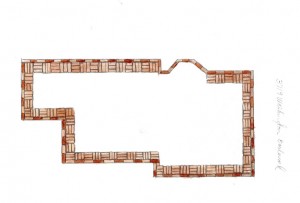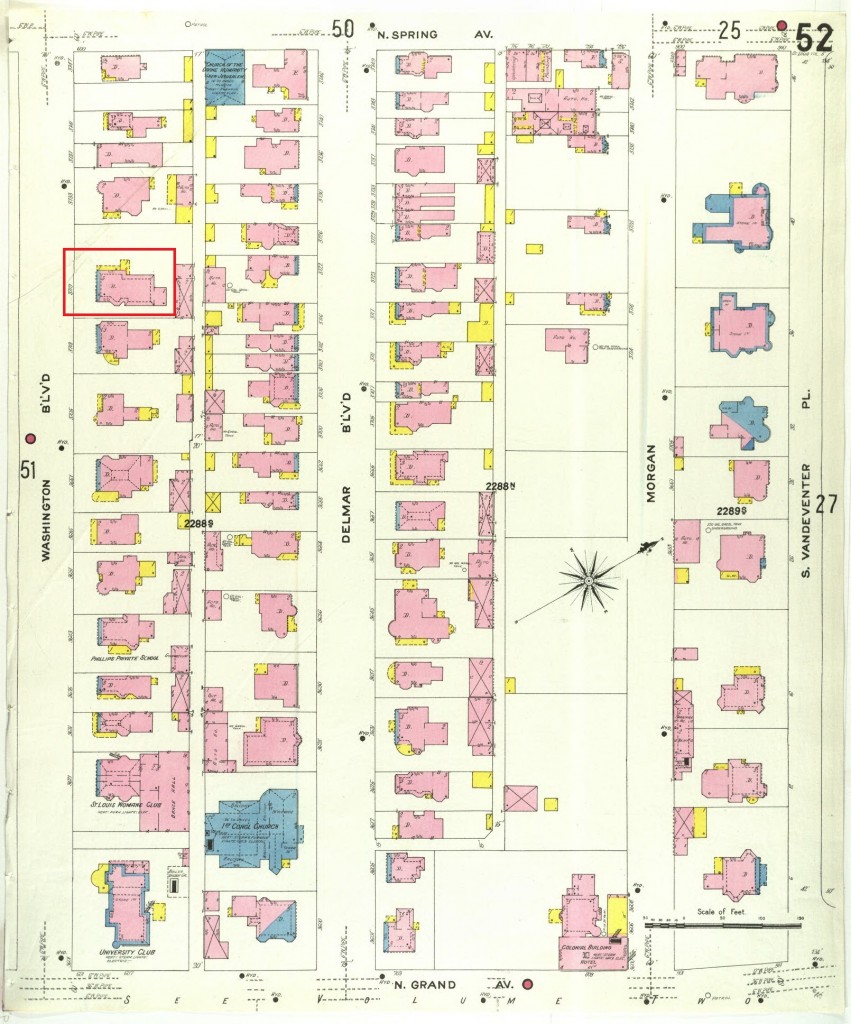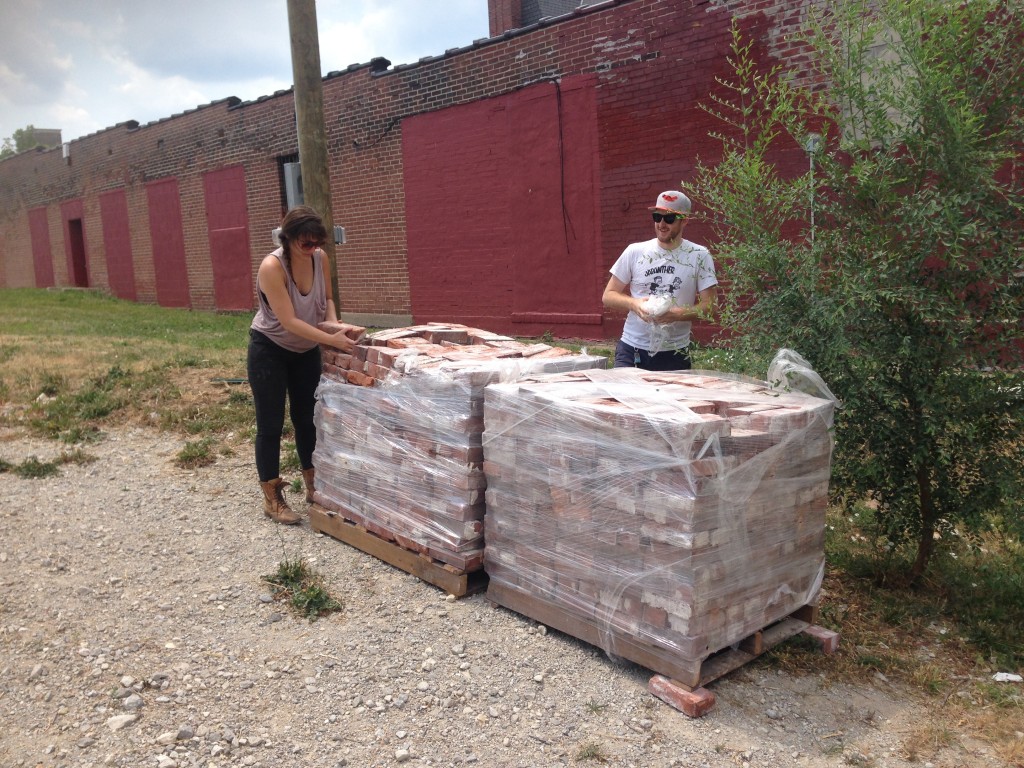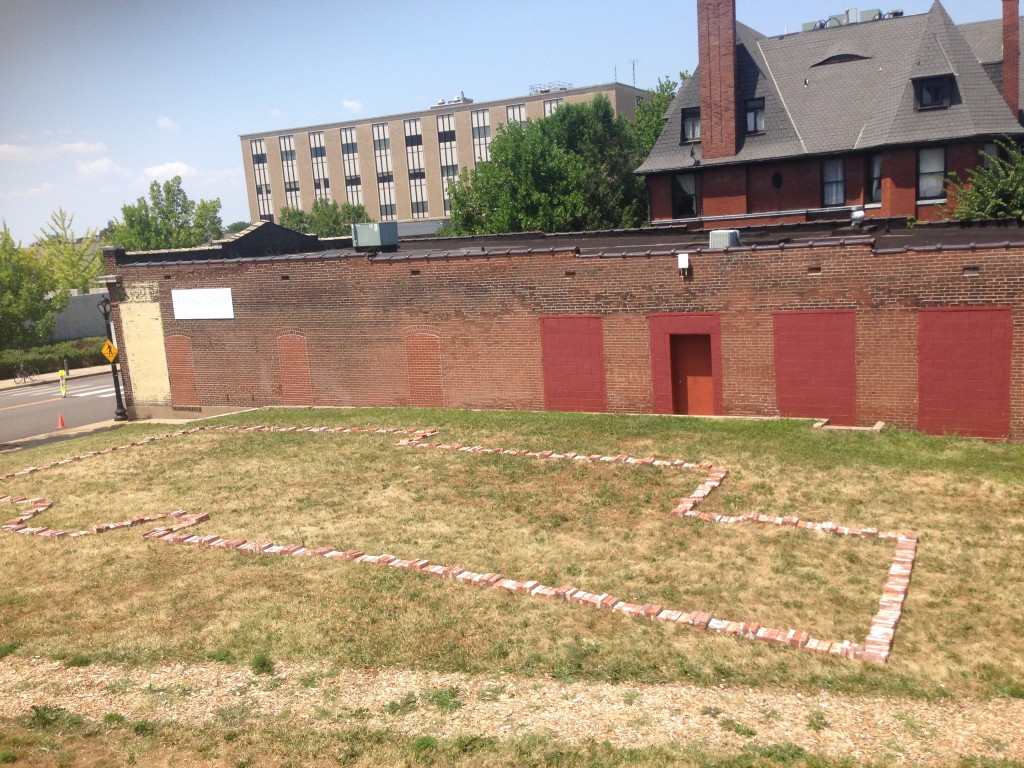As part of “30 Days of Demolition,” artist Carlie Trosclair worked with PRO’s Michael R. Allen to conceptualize a site-specific installation for the vacant lot at 3719 Washington Avenue across from the Pulitzer Arts Foundation and currently part of the Pulitzer’s project PXSTL site. Trosclair designed the installation, which will be on display at the site on Saturday, August 2, 2014.

As a visual representation and memorializing marker, a site sensitive brick installation will outline the footprint of the residential property at 3719 Washington Boulevard that stood from 1879 to 1971 on the vacant lot across from the Pulitzer Foundation for the Arts. The exterior pattern represents a common basket-weave pattern found on the elevations of St. Louis homes. The installation works to thread our most recent losses in June with the loss of the historic dwelling at 3719 Washington Blvd over 40 years ago.

While the presentation of data from our current year provides a microscopic view of demolition, examination of the site on Washington Avenue creates a wider, contextually-informed view. The site reminds us that the onslaught of demolition of historic city architecture is nearly historic itself, and that its remainders are tangible spaces that often still form urban voids. PXSTL attempts to renew the cultural life of a site that has been dormant since a time at which St. Louis had over 622,000 residents (1970) compared to the present figure of 319,000 (2010). The population figures are mirrored in an urban landscape bearing scars of depletion.

The site is intertwined with the economy of St. Louis architecture beyond the life of the house that stood there. James B. Green, an industrialist who had founded the Laclede Firebrick Manufacturing Company in 1869, expanded the existing house on the site into a 3-story mansion in 1879. Green hailed from England’s famous Staffordshire region, where clayworkers have honed brick and architectural terra cotta for generations. Green arrived in St. Louis in 1857, and organized the Laclede Rolling Mills. The English-born entrepreneur branched out into the local clay industry, and his Laclede Firebrick Company was one of the city’s largest manufacturers of fire brick used to line industrial hearths and furnaces, chimneys of all kinds and smokestacks. In 1907, while still living at this address, Green merged his company with the Christy Fire Clay Company to become the Laclede-Christy Clay Products Company.

The house eventually passed to commercial uses, following the decline of the Midtown area as a fashionable residential enclave. One notable tenants was the St. Louis Cardinals baseball team, whose offices moved to the third floor of the house in 1921. After another fifty years of commercial use – a transition that befell many of the dwellings’ neighbors (including the extant Frederick Newton Judson Residence at 3733 Washington) – the Green residence came down in October 1971. The large PXSTL site and parking lot to the east are testament to the visual emptiness that demolition on the block created.
“30 Days of Demolition” is supported by the Robert Rauschenberg Foundation and Pulitzer Arts Foundation.


One reply on “Installation at 3719 Washington Avenue”
Yeah that whole area is messed up. The destruction of the urban environment is as serious as the lost of beautiful buildings. I understand you can’t save everything, but there is not a hint of how to best replace the urban environment. No doubt destroying individual buildings destroys the urban fabric. Mass transit and walkable cities are the first casualties, but even the economic prosperity of the city itself becomes impacted by these demolitions.
The Grand Center area is a perfect example how to damage the urban fabric with parking lots and vacant lots. Throw in a few fast food joints or chain stores and the damage becomes semi permanent.